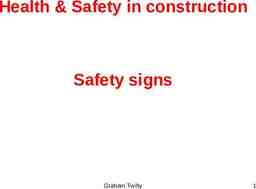Quality Management System Certification in the Aerospace
6 Slides1.15 MB
Quality Management System Certification in the Aerospace Industry (AS9100) Charles Williams HQ OSBP Program Manager Wednesday, August 15, 2018
From R&D to Manufacturing on Major Projects Major Projects: – Space Launch Systems (SLS) – ORION New Certification Requirements Requirements to provide human rated hardware. – No longer AS 9100 Level C – AS 9100 Level D is now required
AS9100 C and D Overview AS9100 Revision C was released in January, 2009. The AS9100C changes are driven by repeated delivery of non-conforming product and repeated late delivery by organizations that held AS9100A/B certifications. This AS9100 revision is to elevate the requirements for Risk Management and to make Risk Management an integrated theme throughout the standard. AS9100 Revision D was released in September 20, 2016.
Changes between AS9100B and AS9100C Greater Emphasis on Risk Management Introduces “Special Requirements” Introduces “Critical Items” Measure: Requirements conformance Measure: Delivery performance Adopt Proven Product Development Processes Eliminate “recurring corrective actions”
Changes between AS9100C and AS9100D Product safety, counterfeit parts, and human factors are the big differences between AS9100 Rev. D and Rev. C. Risk clause was merged with the new ISO 9001 risk requirements along with an increased emphasis on risks in operational processes. Awareness clause was added with reinforced requirements for awareness of individual contribution to product and service quality and safety along with ethical behavior Human Factors are included as a consideration in nonconformity management and corrective action Configuration Management was clarified and improved to address stakeholder needs.
It is time to move to the next Level. AS 9100 Level D











